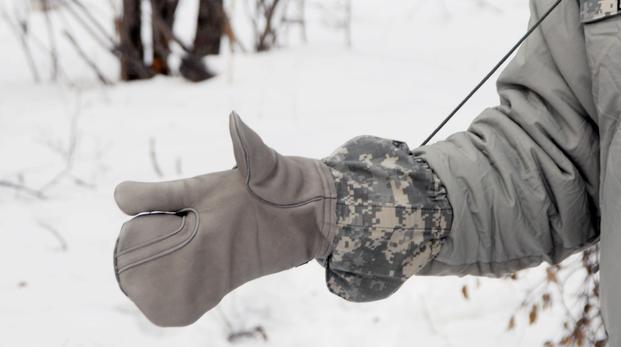U.S. Army equipment officials are ramping up their extreme-weather testing to update the service’s cold and hot weather gear.
Since the early 2000s, the Army has been focused primarily on the Middle East, gearing all equipment needs toward operations in Iraq and Afghanistan.
Now it’s much more likely that soldiers will find themselves fighting in jungle and cold-weather environments, equipment officials maintain.
Earlier this week, the Army put out a call to industry for a new style Jungle Combat Boot in an effort to equip two infantry brigade combat teams by late next year.
The Army is also trying to update its selection of cold-weather boots and gloves.
Several years ago, the service approved the Gen III Extreme Cold Weather Clothing System, or ECWCS. The seven-level system offers options from base layers to an extreme cold jacket and pants featuring man-made high loft insulation. The system is designed to go down to minus 60 degrees Fahrenheit.
“The biggest challenge is the industrial base; they weren’t focused on cold weather, especially where we needed it,” Col. Dean Hoffman IV, who manages Project Manager Soldier Protection and Individual Equipment, said Wednesday at the Association of the United States Army's annual meeting.
“How many people in this room are going to need a negative 63-degree boot? There is not a strong market for that, but we might have the need to have the ability to fight in that environment.”
The Army still uses the extreme cold weather trigger finger mitten gloves, but “they are 1950s technology; they work great but what can we do to improve that quality?”
The challenge with the extreme cold weather gear is “we only have a few months out of the year that we can test it” with soldiers at Fort Drum, New York and Alaska, said Col. Travis Thompson, director of the Soldier Division at the Army’s Maneuver Center of Excellence at Fort Benning, Georgia.
The service began looking for a new cold-weather boot last winter to replace the outdated, Extreme Cold Weather Boot, or ECWB.
“We said ‘hey we need to try to everything we can to speed this up,’ and the manufacture couldn’t make it fast enough to be able to do the test last winter, so we are not actually going to get to do it for the next few months,” Thompson said.
The Army is also looking at the cold-weather testing being done by countries such as Switzerland, Denmark, Finland and Canada to see what type of gear they are buying, Hoffman said.










